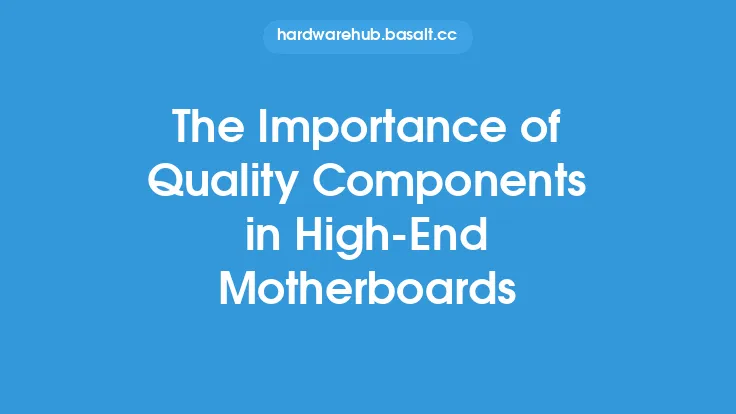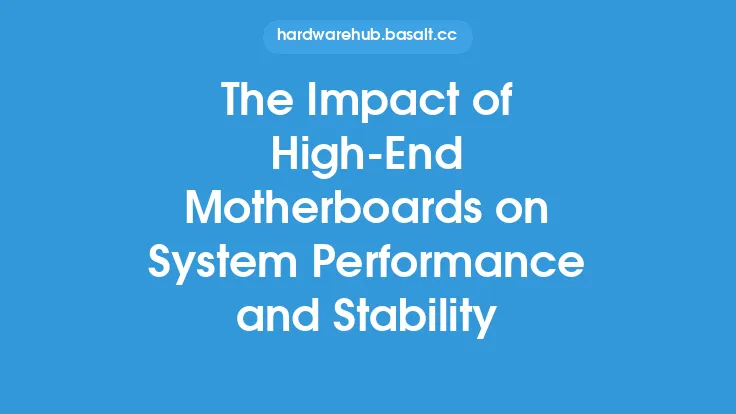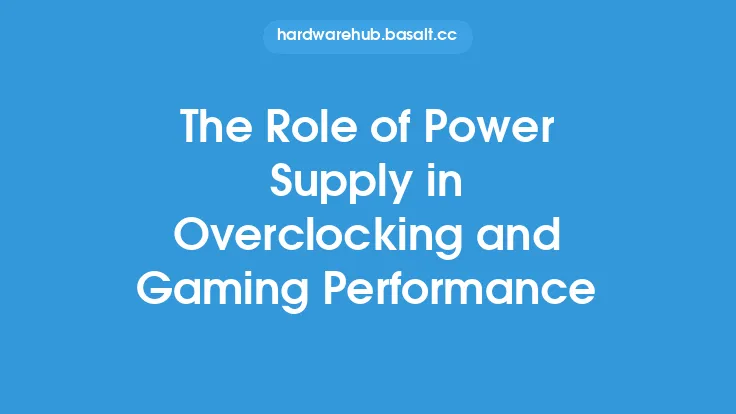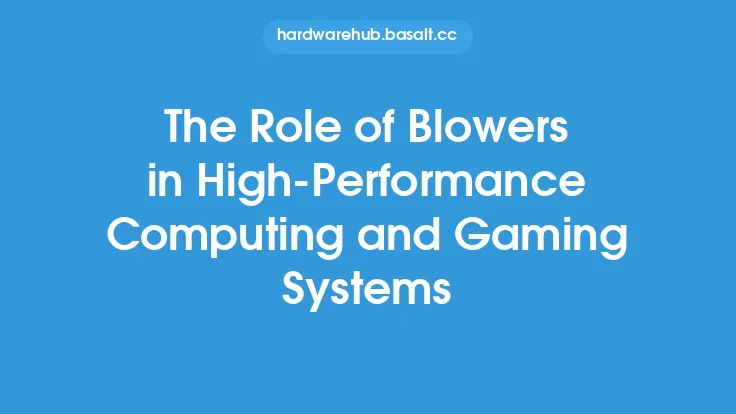When it comes to high-end motherboards, one of the most critical aspects that sets them apart from their more budget-friendly counterparts is the power delivery system. The power delivery system, also known as the voltage regulator module (VRM), is responsible for providing clean and stable power to the CPU, memory, and other components on the board. In this article, we will delve into the world of power delivery in high-end motherboards, exploring the key components, technologies, and design considerations that make them tick.
Introduction to Power Delivery
The power delivery system on a motherboard is comprised of several key components, including the VRM, power phases, chokes, capacitors, and MOSFETs. The VRM is responsible for converting the 12V DC power from the power supply unit (PSU) into the various voltages required by the CPU, memory, and other components. The power phases, typically 4-16 or more, work together to provide a stable and efficient power supply to the CPU. Chokes, also known as inductors, help to filter out noise and ripple from the power supply, while capacitors store energy and help to regulate the voltage. MOSFETs, or metal-oxide-semiconductor field-effect transistors, are used to switch the power on and off, controlling the flow of current to the CPU.
Power Phase Design and Configuration
The power phase design and configuration play a critical role in determining the overall performance and efficiency of the power delivery system. High-end motherboards often feature a multi-phase power design, where multiple power phases work together to provide a stable and efficient power supply to the CPU. The number of power phases can vary, but typically ranges from 4-16 or more. The more power phases, the more stable and efficient the power supply, but also the more complex and expensive the design. The configuration of the power phases is also important, with some motherboards featuring a single-rail design, where all the power phases are connected in parallel, while others feature a multi-rail design, where the power phases are divided into multiple rails, each providing power to a specific component or group of components.
Voltage Regulator Module (VRM) Design
The VRM is the heart of the power delivery system, responsible for converting the 12V DC power from the PSU into the various voltages required by the CPU, memory, and other components. High-end motherboards often feature a high-quality VRM design, with components such as high-current chokes, low-ESR capacitors, and high-performance MOSFETs. The VRM design should be able to provide a stable and efficient power supply, with low noise and ripple, and high efficiency. Some motherboards also feature advanced VRM designs, such as digital VRMs, which use digital controllers to regulate the voltage, providing more precise control and higher efficiency.
Power Delivery Technologies
Several power delivery technologies have been developed to improve the performance and efficiency of the power delivery system. One such technology is PWM (Pulse Width Modulation), which uses a high-frequency signal to control the switching of the MOSFETs, providing more precise control and higher efficiency. Another technology is DC-to-DC conversion, which uses a separate converter to provide power to the CPU, memory, and other components, providing more efficient and stable power supply. Some motherboards also feature advanced power delivery technologies, such as LLC (Load Line Calibration) resonance, which helps to improve the efficiency and stability of the power supply.
Cooling and Thermal Management
Cooling and thermal management are critical aspects of power delivery, as excessive heat can reduce the performance and lifespan of the components. High-end motherboards often feature advanced cooling solutions, such as heat sinks, heat pipes, and thermal pads, to help dissipate heat from the power delivery components. Some motherboards also feature advanced thermal management technologies, such as thermal sensors and fan control, which help to monitor and control the temperature of the power delivery components.
Conclusion
In conclusion, the power delivery system is a critical aspect of high-end motherboards, providing clean and stable power to the CPU, memory, and other components. The key components, technologies, and design considerations that make up the power delivery system are complex and nuanced, requiring careful consideration and optimization to provide optimal performance and efficiency. By understanding the intricacies of power delivery, enthusiasts and overclockers can better appreciate the importance of a high-quality power delivery system and make informed decisions when selecting a high-end motherboard for their build. Whether you're a seasoned overclocker or a novice enthusiast, a well-designed power delivery system is essential for unlocking the full potential of your system and providing a stable and efficient power supply to your components.





